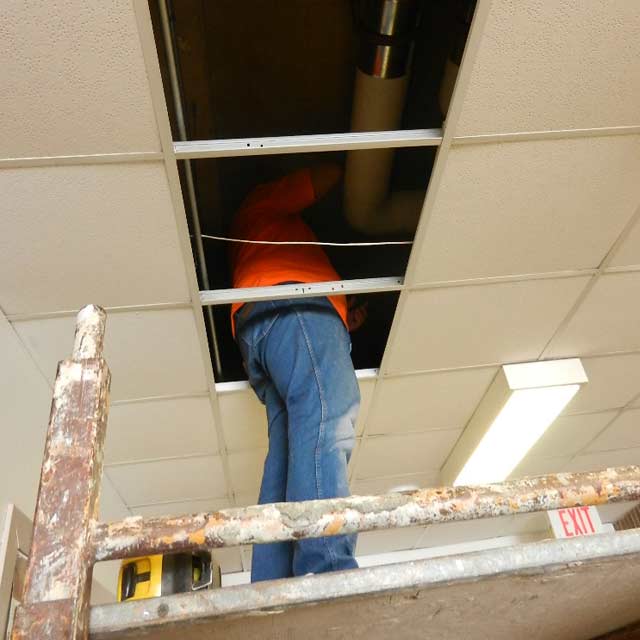
Ground Penetrating Radar and Concrete Scanning
A Ground Penetrating Radar Concrete Scanner is a person that uses GPR concrete scanning methods.
The technique is a nondestructive test for concrete.
Ground penetrating radar or better known as GPR concrete scanning is a common phrase that 100,000’s of people search for on the internet. However, ground penetrating radar is, for all practical purposes, a geophysical instrument. The geophysical equipment is used to characterize features at depth. In the case of concrete scanning, within concrete. In the most general sense, GPR is analogous to radar used to track aircraft. Unlike radar used to track aircraft, the GPR antenna transmits a low power electromagnetic pulse. The pulse is intended to penetrate the surface of the concrete and bounce off of features within the concrete. When the transmitted signal is received back by a GPR antenna the display plots the response on a screen.
In contrast to GPR services using lower frequency antennas (e.g., 25, 50, 100, 200, 250, or 500 MHz), concrete scanning services use higher frequency antennas, often over 450 MHz. Occasionally, a lower frequency antenna is used for more massive concrete blocks that are not heavily laced with wire mesh, steel reinforcing bar, or other metal. It may be difficult to yield good GPR concrete scanning results with less than a 500 MHz antenna when scanning wire mesh. Especially, if there is more than one layer of mesh. However, it commonly yields desirable results over a couple feet of concrete with metal reinforcing bars spaced far apart for the signal to pass in between the bars. In either case, concrete scanner results from over concrete or other pavement containing metal fibers will likely be of little use.
A GPR concrete scan is not a X Ray. The term X Ray concrete or X-Ray is often used synonymously. There are times when a “X Ray” is demanded or required by a client. When this is the case, one better discuss the specifications over with the client. The client may need to scan a large area, may have access to only one side of the slab, or may not want to make the necessary preparations for a X-ray technician to use a radioactive source.
As Quoted from Sensors & Software’s FAQ about Concrete Scanning with a Conquest.
10. What advantages does Conquest offer for Concrete inspection over other NDT methods?
Compared to X-rays:
- GPR/Conquest does not pose any heath hazards and such work can be conducted during normal business hours. With X-rays, work must be carried out when there are no people in the vicinity due to the hazards of stray radiation; this usually means working after midnight.
- X-ray personnel need to be certified and work will require several people on site, some to setup and operate the machine and others to ensure that no unauthorized people are present. Conquest requires a single person to operate it and they need only understand the basic theory of GPR to interpret results. No formal certification is necessary.
- With X-rays, you need access to both sides of a slab. With Conquest, all scanning can be done from one side.
- Conquest results are in real time, X-Rays require some film development and analysis in the truck.
- Depths to target are easily determined using Conquest, where X-rays require some calculations and assumptions involving source/target geometry.
Compared to cover meters:
- Conquest can penetrate much deeper than cover meters, which are typically good up to 5″ maximum.
- Cover meters work on the magnetic induction in metallic structures in concrete (e.g. Rebar), and will not pick up a non-metallic conduit. Conquest can detect metallic and non-metallic structures.
- Conquest can accurately determine depth to those features, where cover meters estimate depth with a large error margin.
Visit Sensors & Software for more expert help.

